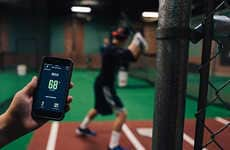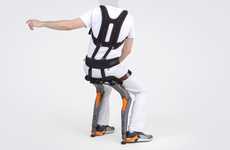
This Assistive Running Suit Promises to Boost One's Stride
Laura McQuarrie — June 15, 2017 — Lifestyle
References: wyss.harvard.edu & digitaltrends
Teams from the Wyss Institute and the Harvard School of Engineering and Applied Sciences collaborated on the development of a smart, robotic running suit that has the potential to significantly boost one's performance when worn. As the project describes, the "tethered soft exosuit can reduce the metabolic cost of running on a treadmill by 5.4% compared to not wearing the exosuit."
The exosuit works by applying additional force to the hip joint, which helps to improve one's stride. As the teams see it, this robotic suit has the potential to improve the performance of recreational athletes, as well as assist with the recovery process following an injury.
Across multiple industries, exosuits are being used to improve mobility in the elderly, give employees tasked with physical labor additional strength and much more.
The exosuit works by applying additional force to the hip joint, which helps to improve one's stride. As the teams see it, this robotic suit has the potential to improve the performance of recreational athletes, as well as assist with the recovery process following an injury.
Across multiple industries, exosuits are being used to improve mobility in the elderly, give employees tasked with physical labor additional strength and much more.
Trend Themes
1. Smart Running Exosuits - The development of smart, robotic running suits that can significantly boost performance offers disruptive innovation opportunities in the fitness industry.
2. Recreational Athlete Performance Enhancement - The use of robotic running suits to improve the performance of recreational athletes presents disruptive innovation opportunities in the sports and recreation industry.
3. Assistive Technology for Injury Recovery - The application of robotic running suits for assisting with the recovery process following an injury creates disruptive innovation opportunities in the healthcare and rehabilitation industry.
Industry Implications
1. Fitness - The development of smart, robotic running suits that can significantly boost performance offers disruptive innovation opportunities in the fitness industry.
2. Sports and Recreation - The use of robotic running suits to improve the performance of recreational athletes presents disruptive innovation opportunities in the sports and recreation industry.
3. Healthcare and Rehabilitation - The application of robotic running suits for assisting with the recovery process following an injury creates disruptive innovation opportunities in the healthcare and rehabilitation industry.
4.8
Score
Popularity
Activity
Freshness























